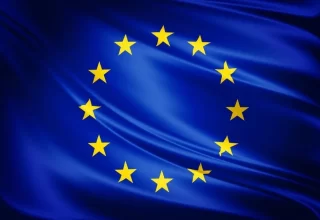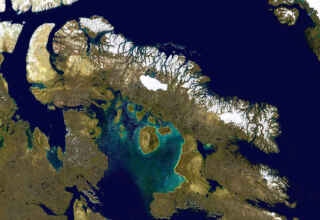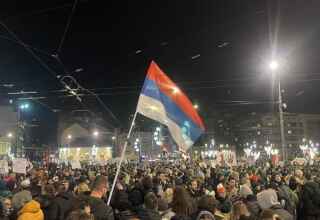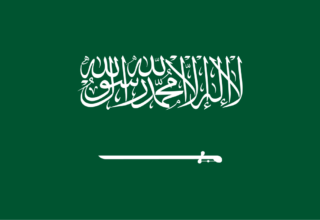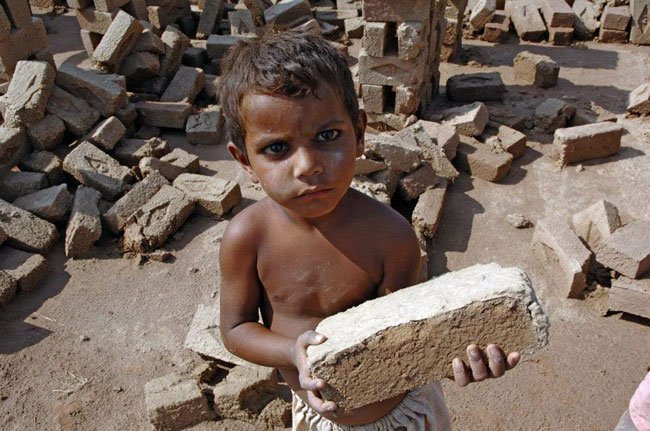
“The scenes of a toddler lying dead in the mud and the body of a boy washed up on a Turkish beach are tragic evidence of the world’s failure to fulfil its obligations to the world’s children” (UN News, 2017). Because of countries’ lax commitment or unsuccessful strategies of children’s rights protection, approximately 1 billion children see their basic human rights breached each year (UNICEF, 2020). Whether through sexual abuse, psychological violence, discrimination, poverty, exclusion from education, early marriage – which contribute to threaten children’s’ life, survival and development – children suffer from ongoing basic rights violations worldwide. A major part in the degeneration of this picture has been played by violations based on tradition, culture, religion, or superstition committed and tolerated by the child’s parents or the caretaker – often with the support of communities or whole states. At the UN level, concerns about harmful traditional or cultural practices have been brought up for the first time more than 50 years ago in a General Assembly resolution, thus, proving that the UN’s worry for this topic is not recent.
Children are fully-fledged independent rights-holders
Children are the most vulnerable subjects in today’s society. Since they are still in their development process, children are more easily exposed to bad living situations such as poverty, malnourishment, abuse, inadequate health care, nutrition, safe water, housing, and pollution. Moreover, children are often disproportionately impacted by human rights crises. Such discrimination starts a birth. Around 290 million children were not registered at birth, which breaches their right to a legal identity or proof of existence (Amnesty International, n.d.). Disease, starvation, and poverty all jeopardize children’s futures, and hence the futures of the society in which they live. Factors like globalization, climate change, digitization, mass migration, altering work patterns, and decreasing social protection networks all have a significant influence on children in many nations. In times of armed war and other emergencies, the consequences of these shifts can be even more destructive. Moreover, children are not self-sufficient and unable to independently provide for their nurturing as well as the guidance that they require as they progress towards independence. When the main adult caregiver misses or is unable to satisfy a child’s requirements, it is up to the State, as the primary duty bearer, to find an alternative in the child’s best interests. As children do not participate in political processes in the usual sense, their voices are likely to be ignored on a variety of crucial problems that concern them now and that, as such, can impact them in the future if they are not given the right consideration. Short-sighted policy makers that ignore children’s needs are responsible for a negative impact on the future of all members in the society (UNICEF, n.d.)
This position of children within the society, which leads to a more vulnerable, disadvantageous, and fragile status, can be considered as one of the possible reasons why children’s rights are still nowadays widely violated in many regions of the world. Indeed, despite the acknowledgement of the important of safeguarding their rights as well as the progress that has been achieved in this filed – starting with the Geneva Declaration of the Rights of the Child of 1924, the 1959 Declaration of the Rights of the Child adopted by the General Assembly, the recognition by the Universal Declaration of Human Rights, as well as by several agencies and international organizations concerned with the welfare of children – not every child has the opportunity to live a peaceful and respected childhood. Still, too many childhoods are cut short. Nowadays many children see their lives torn apart through the abuse of their most basic rights. These violations happened in different forms and are motivated by different reasons. Leaders and communities must keep what they promised when they pledged to the above-mentioned declarations. They must act now, once and for all, to protect children’s rights. They must commit to ensuring that every child sees each single of his or her rights guaranteed and safeguarded.
Not only do children and adolescents enjoy the same basic human rights as adults, but they are also entitled to addition rights that address their unique status and needs. They are neither helpless recipients of charity nor their parents’ property. Hence, they should not be merely seen in relation to their parents. Children are independent human beings on their own with their own rights. They are as much right-holders as their parents. (UNICEF, 2019). Given that a right is a legal entitlement, and not something bestowed by benevolent governments, states have a legal duty to respect, preserve, and fulfil human rights recognized to every child. Accordingly, in 1989 global leaders adopted the United Nations Convention on the Rights of the Child (UNCRC), i.e., an international agreement on childhood that incorporates the full range of human rights – civil, political, economic, social and cultural rights – of children into one single document. Moreover, it lays out the rights that children must have in order to reach their full potential. As such it represents a historic commitment of the international society to the world’s children. It has become the most extensively ratified human rights treaty in history, and it has had a significant impact on the lives of children all around the globe. The Convention presents a view of the child as an individual, as well as a part of a family and community, with rights and obligations that are age and developmentally appropriate. The Convention acknowledges all children’s intrinsic human dignity and the need of guaranteeing their well-being and development. It makes clear that a minimum standard of living should be a right for all children, not a privilege enjoyed by a select few (World Vision).
The importance of culture and tradition
All violations of children’s rights can legitimately be described as harmful practices. International organizations, however, have been repeatedly and thoroughly confronted with harmful traditional practices based on values and ideas that have been held by community worldwide for centuries. Some of these practices may benefit community members, while others may severely harm and damage a specific group of the community which is almost always the most vulnerable one, such as children.
Such practices may have been intrinsic in communities for decades, while others may be more recent. In either case they have some cultural, social or religious foundation and are the core of cultural values in many countries. “Such practices are perpetrated through false beliefs about child development and the cause and treatment of ill-health. These may stem from religious edict or belief, or from tradition or superstition or in some cases be promoted by health practitioners” (International NGO Council on Violence against Children, 2012). Their violent nature seriously threatens the child’s life, development, health, education and protection. Consequences such as profound and long-lasting health and psychological consequences, as well as disability or death are almost unlikely to avoid – like in the case of mutilation and killing of children with albinism for ritualistic purposes (Guide to Namibia’s Child Care and Protection Act 3 of 2015). Frequently committed against extremely young children or new-borns, who do not yet possess the capacity to accept or deny permission on their own, many of these practices are carried out by the children’s parents, caretakers, while others by third people with parent’s assumed or actual consent. Communities or whole states often support this behaviour. Thus, the enactment of these harmful traditional practices lies in the assumptions of either parental power or the parent’s rights over their children as their creators. In either case this goes against the above-mentioned concept of the child as a fully-fledged independent rights-holder (International NGO Council on Violence against Children, 2012).
Under the term harmful traditional practices, four are the most common ones. Female Genital Mutilation and/or Cutting (FGM/C) is a practice that removes part of the female genitals. Besides, reflecting deep-rooted gender inequality and female discrimination FGM/C is considered a violation of human rights of girls children as it is painful and traumatic, leading to severe health problems. Moreover, it represents a form of abuse of the rights of women to bodily integrity, even more as it targets underaged children who are unable to express their consent. Guaranteeing premarital virginity and female modesty are mostly cited as the two main reasons for FGM/C. Child and Early Marriage (CEM) which is defined as marriage or co-habitation before 18 years of age, not only undermines children’s right to autonomy but it is linked to aggression and coercion. Further consequences, such as sexual exploitation, early pregnancies, health repercussions, and school drop-out are further reasons why CEM is seen as violating children’s – in this case girls – rights. This is exacerbated by the fact that CEM aliments poverty and deprivation cycles as children of adolescent mothers are more likely to be born into poverty and suffering (Bartelink, le Roux, and Levinga, 2017).
In honour killings, girls or woman are assaulted or killed by or on behalf of a family member for violating particular gender societal standards, such as being sexually active, illicit relationships pregnancy outside of marriage or even being a victim of rape. Such happenings are portrayed as denigrating the honour of a spouse or a family member (ActionAidUK, 2013). Most honour killings which are claimed to be the outcome of family council decision plans to restore honour, are practiced in the MENA region and parts of South Asia, where victims count up to approximately 5000 every year. Son preference, or in other words, sex selection is a sign of systemic social, cultural, political, and economic inequalities against women, which leads to both neglect and death of girls. Because the desire for boys and devaluation of girls frequently happens in circumstances where people are poor and impoverished, and women have limited economic possibilities, it is common to predict that the preference for sons will alter as economic growth progresses. Son preference is linked to a number of behaviours that discriminate against, violate, and damage women and girls. Forced labour and deprivation of education, medical care, and nutritional food, trafficking, early marriage, pressure on women to give birth to males, violence against women who give birth to daughters, and sex-selective abortions are among them (OHCHR, n.d.).
These practices which are deeply rooted in gender-based discrimination led the UN General Assembly in 1979 to adopt The Convention on the Elimination of all Forms of Discrimination Against Women (CEDAW). Specifically, Article 5(a) obliges states to take all appropriate measures to “modify the social and cultural patterns of conduct of men and women” so as to eradicate “prejudices and customary and all other practices which are based on the idea of the inferiority or the superiority of either of the sexes or on stereotyped roles for men and women” (CEDAW).
In 2014, the CEDAW together with the Committee on the Rights of the Child (CRC) issued a Joint General Recommendation on harmful practices affecting women and children. Specifically focussing on girls, the recommendation aimed at raising awareness on FGM/C, child marriage, polygamy, honour crimes. By emphasizing the fact that addressing harmful practices must be among the core obligations of states under both CEDAW and the CRC, the recommendation also gave extreme relevance to neglection of girls, extreme dietary restrictions, virginity testing, binding, scarring, branding/infliction of tribal marks, ferocious initiation rites, widowhood practices, accusations of witchcraft, infanticide, incest and body modifications improving the beauty or marriageability of girls and women (Joint general recommendation/general comment No. 31 of the Committee on the Elimination of Discrimination against Women and No. 18 of the Committee on the Rights of the Child on harmful practices, 2014).
Beside these gender-based cultural practices, there are several others which also affects male new-borns and young boys. Examples are: binding of new-borns and infants, birth superstitions, blood-letting, male circumcision, corporal punishment, cursing, eyelid incisions, food taboos, withholding food/starvation, initiation rites, refusal of life-saving medical interventions, organ removal – only to name a few.
Against this background different provisions have been taken. The 1945 UN General Assembly resolution emphasized the inconsistency of “customs, ancient laws and practices relating to marriage and the family” with the 1948 Universal Declaration of Human Rights. Forty years later, in 1984, the Commission on Human Rights adopted its first resolution (1984/48) on “traditional practices affecting the health of women and children” thereby making it an issue of absolute priority of the Commission (now Human Rights Council). Article 24(3) of the UNCRC, demands that measures be taken to abolish “traditional practices prejudicial to the health of children” which implicitly refers to harmful traditional practices. Moreover, to denounce every form of assumption of assumptions of parental powers or rights over their children as well as to strengthen the importance of children rights the UNCRC emphasizes the role of children as fully-fledged rights-holders. Through Article 18 UNCRC the concept of parental “rights” has been replaced with parental “responsibilities” towards children ensuring that the child’s best interests are parents’ “basic concern”. The respect of this provision, however, raises difficulties as difference societies have divergent ideas on what constitutes the child’s best interest (International NGO Council on Violence against Children, 2012).
A further provision supportive of the abolition of such practices is Article 14 UNCRC, which states the child’s independent right to religious freedom. The fact that no one of us is born into a specific religion, not even children, prohibits parents from justifying the use of harmful techniques on children in their adult religious beliefs before that latter are capable of independent and informed consent. Articles 6 and 24 UNCRC – which respectively state the child’s right to life, survival and maximum development and the right to health and health services – aim to charge states with the responsibility to convey to parents accurate information on child health, development and life right. As such, parents are put in the conditions to distinguish harmful from non-harmful traditional practices and to rightfully fulfil their responsibilities as parents without harming their children, neither through administering harmful treatments nor by negating children necessary treatments (International NGO Council on Violence against Children, 2012).
In the 2006 report on the Study on Violence against Children notes, the UN Secretary-General urged states to end “adult justification of violence against children, whether accepted as ‘tradition’ or disguised as ‘discipline’ [as] there can be no compromise in challenging violence against children […]”. In light of this, many UN bodies and specialized agencies – such as OHCHR, UNAIDS, UNDP, UNECA, UNESCO, UNFPA, UNHCR, UNICEF, UN Women and WHO – have been established with the specific aim of working towards the complete eradication of harmful traditional practices (International NGO Council on Violence against Children, 2012).
Besides UN provisions, also the African Charter on the Rights and Welfare of the Child aims at removing harmful traditions. Article 1(3) requires States to desist from any “custom, tradition, cultural or religious practice[s]” that contravene children’s rights as well as states’ duties and obligations contained in the Charter. More specifically, Article 21 forces states to eradicate “harmful social and cultural practices affecting the welfare, dignity, normal growth and development of the child” (Guide to Namibia’s Child Care and Protection Act 3 of 2015).
Lack of clarity and communities’ reluctance
While UN provisions and international organization argue that harmful traditional practices breach children’s fundamental rights, communities claim that prohibiting such practices is a violation of their religion and culture and constitutes a way of depriving a child of his cultural and religious identity. While Jewish ceremonial male circumcision may be considered child abuse, others may contend that depriving a kid of his cultural and religious identity is harmful. This is only one example that demonstrates the difficulty of conciliating the above-analysed Article 24(3) UNCRC with Article 30 UNCRC which declares that “children and young people who belong to a minority group have the right to share their culture, language and religion with other people in that group”. The same ambiguity rises with Article 3(1) UNCRC stating that “In all actions concerning children, whether undertaken by public or private social welfare institutions, courts of law, administrative authorities or legislative bodies, the best interests of the child shall be a primary consideration”. The standard of “best interest” is indetermined as the Convention does not give a precise definition leaving room for different interpretation of what constitutes a child’s best interests. On one side international organization may claim that children’s bust interest is fulfilled by freeing them from any form of physical and psychological violence, included harmful traditional practices; on the other side, communities may claim that the best interest of the child is achieved only if given the possibility to grow following his or her cultural heritage and religious identity (Diduck, Peleg and Reece, 2015).
Despite their harmful nature, which makes them a clear violation of international human rights standards, traditional practices are still being exercised. Indeed, they are seldomly challenged as they take on a moral halo in the minds of those who engage in them. The interpretation that is given to the term harmful traditional practices from those who engage in them is the main reason why such practices are still performed. Describing traditional procedures as harmful violations of children’ basic rights is seen by those who practice them as inherently critical of their cultural and religious traditions. What communities claim is that there is no such thing as a harmful traditional practice. According to them, defining such practices as harmful leads to a simplistic vilification of their culture and traditional, thereby automatically generating resistance and which hinders communities from engaging in challenging injustice and violence. Accusing their practices of having detrimental consequences on children’s rights “runs counter to their attempts to work holistically and engage constructively with the religious and cultural dimensions of development” (Le Roux, Bartelink, and Palm, 2017). Thus, attempts of international organizations and NGOs to address such practices does not come without difficulties. These are just two reasons why the legal ban of these activities against children is not yet a reality in many nations, demonstrating that law enforcement in many parts of the globe is still weak and cumbersome.
Conclusion
The protection of children against abuses of their rights is a human rights imperative and cannot go unnoticed. Despite the importance that the safeguard of children’s rights has obtained from regional, national as well as international organizations, violence against children still persists worldwide. Harmful traditional practices remain pervasive and socially condoned, thereby continuing to seriously hamper children to live their childhood in peace and enjoy their most basic rights. Still too many communities are justifying extreme violence, both physical and mental, on spurious grounds of tradition, culture or religion. The legal and social acceptance of these abuses which – often transform into social norms – as well as the difficulties encountered in the process aiming at addressing them is a proof of the children’s fragile position within those communities which consider children as a mere parental possession rather than independent fully-fledged rights-holders (Bouah and Sloth-Nielsen, 2021).
The continued legality and social and cultural acceptance of harmful cultural practices in many countries is the proof of the inability of international and regional human rights mechanisms to deal with the compelling issue and, hence, the failure of generating effective solutions aimed at prohibiting and eliminating cultural practices. As long as these practices will be accepted within the children’s communities and legalized as social norms, children’s right will continue to be jeopardized, and their human dignity as well as psychological and bodily integrity abused.
Harmful behaviours must be prohibited by law through the adoption of severe norms which have to be thoroughly implemented. As already stated by the CEDAW and the Committee on the Rights of the Child, in order to be credible States should combat impunity by harshly penalising and prosecuting harmful behaviours. Moreover, through adequate policies governments are required to support children by means of prevention, protection, recovery, rehabilitation, and reintegration (OHCHR, 2020). What is further suggested, is that “states […] take appropriate legislative, administrative, budgetary, judicial and other actions and establish a well-defined, rights-based and locally relevant holistic strategy which includes supportive legal and policy measures, including social measures that are combined with a commensurate political commitment and accountability at all levels”.
However, all these provisions can be put in place only if families, communities, traditional and religious leaders and children themselves take an active part in social change and implementation efforts. Public debates and social mobilization are indispensable for raising awareness among communities about the harmfulness of such practices on children’s mental and physical development. Making communities aware of this means making them part of the process of dismantling those processes that compromise children’s human rights, while preserving practices that have a positive impact on children’s protection. Real change can only happen if substantial development of the society is attained through changes of societal norms and cultural factors. Indeed, the efficient and thorough implementation of laws forbidding harmful acts may be hampered by customs, traditions, and religious restrictions. As a result, states must take further steps to transform communities’ social and cultural patterns of action in order to achieve the eradication of harmful traditional practices. Root causes of the latter should be addressed, which mostly are to be found in issue such as gender stereotypes, poverty and lack of education (OHCHR, 2020).
Finally, education is an empowerment tool which has the power to make children aware from a very early stage of the destructiveness of harmful cultural traditions. Through education, children are not only informed about their basic rights, but they are also enabled to gain that necessary confidence and those skills required to become the first line of prevention of harmful cultural practices. In this way, children themselves will be the main actors in the protection of their own rights thus leading the process of social change (Guide to Namibia’s Child Care and Protection Act 3 of 2015).
Bibliography
Amnesty International. (n.d.). Children’s Human Rights. Available at: https://www.amnesty.org/en/what-we-do/child-rights/
Bartelink, B. E., le Roux, E., & Levinga, W. (2017). Harmful Traditional Practices in The Context of Faith: A Literature Review. Part of the UK Government-funded ‘Working effectively with faith leaders to challenge harmful traditional practices’. Research report. Available at: https://prevention-collaborative.org/wp-content/uploads/2021/08/Bartelink_2017_Harmful_practices_context_of_faith.pdf
Bouah, N., & Sloth-Nielsen, J. (2021, June 15). Towards Comprehensive Guidance for States in the African Region to respond to Children’s Rights in Emergencies, Disasters and Pandemics. Https://Brill.Com/View/Journals/Chil/29/2/Article-P447_447.Xml. Available at: https://brill.com/view/journals/chil/29/2/article-p447_447.xml
Child rights and why they matter. (2019, June 4). UNICEF. Available at: https://www.unicef.org/armenia/en/stories/child-rights-and-why-they-matter
Child Rights – History, Facts and How To Protect Them | World Vision Australia. (n.d.). World Vision. Available at: https://www.worldvision.com.au/child-rights
Countries failing to prevent violence against children, agencies warn. (2020, June 17). UNICEF. Available at: https://www.unicef.org/press-releases/countries-failing-prevent-violence-against-children-agencies-warn
Diduck, A., Peleg, N, & Reece, H. (2015). Law in Society: Reflections on Children, Family, Culture and Philosophy Nijhoff: Brill.
Guide to Namibia’s Child Care and Protection Act 3 of 2015. Chapter 20: Harmful Social, Cultural or Religious Practices. (2019). Available at: http://www.lac.org.na/projects/grap/Pdf/20-Harmful_Social_Cultural_or_Religious_Practices.pdf
HARMFUL TRADITIONAL PRACTICES AFFECTING WOMEN & GIRLS. (2013). ActionAid UK – Gender & Development Network – Womankind International Planned Parenthood Federation – Orchid Project. Available at: https://www.ippf.org/sites/default/files/harmful_traditional_practices.pdf
International NGO Council on Violence against Children. (2012). Violating children’s rights: Harmful practices based on tradition, culture, religion or superstition. Available at: https://resourcecentre.savethechildren.net/document/violating-childrens-rights-harmful-practices-based-tradition-culture-religion-or/
Joint general recommendation/general comment No. 31 of the Committee on the Elimination of Discrimination against Women and No. 18 of the Committee on the Rights of the Child on harmful practices (2014). ReliefWeb. Available at: https://reliefweb.int/report/world/joint-general-recommendationgeneral-comment-no-31-committee-elimination-discrimination
Le Roux, E., Bartelink, B. E., & Palm, S. (2017). What is the harm in ‘harmful traditional practices’? Available at: https://assets.publishing.service.gov.uk/media/5c7d541e40f0b603d7852921/PB_What_is_the_harm_S02_18Dec17.pdf
Ongoing violations of child rights highlighted as UN monitoring body. (2017, January 16). UN News. Available at: https://news.un.org/en/story/2017/01/549562-ongoing-violations-child-rights-highlighted-un-monitoring-body-opens-annual
UN Office of the High Commissioner for Human Rights (OHCHR), Fact Sheet No. 23, Harmful Traditional Practices Affecting the Health of Women and Children, August 1995, No. 23. Available at: https://www.refworld.org/docid/479477410.html
UN Office of the High Commissioner for Human Rights (OHCHR) (2020). INFORMATION SERIES ON SEXUAL AND REPRODUCTIVE HEALTH AND RIGHTS: HARFUL PRACTICES. Available at: https://www.ohchr.org/EN/Issues/Women/WRGS/Pages/Information-Series-Sexual-Reproductive-Health-Rights.aspx
By Elisabeth Heinz: The European Institute for International Law and International Relations.

